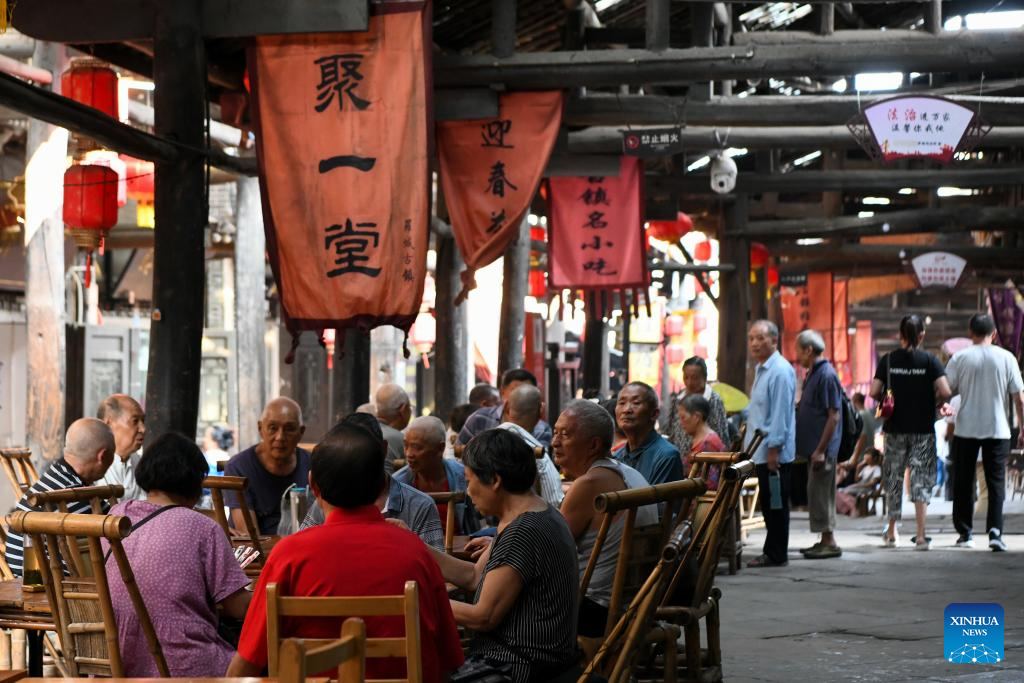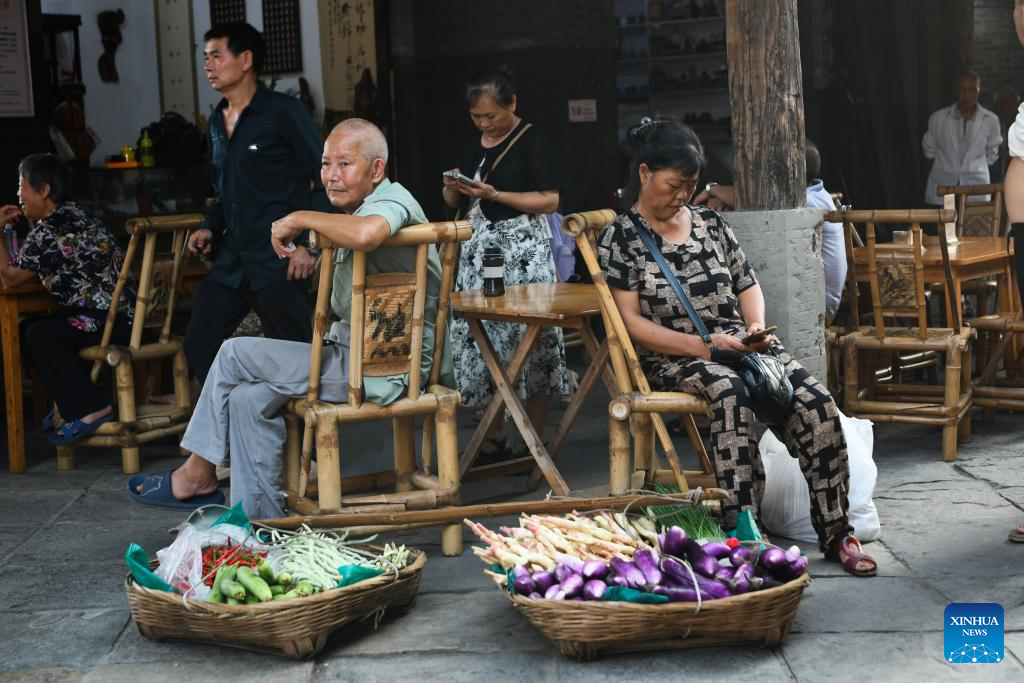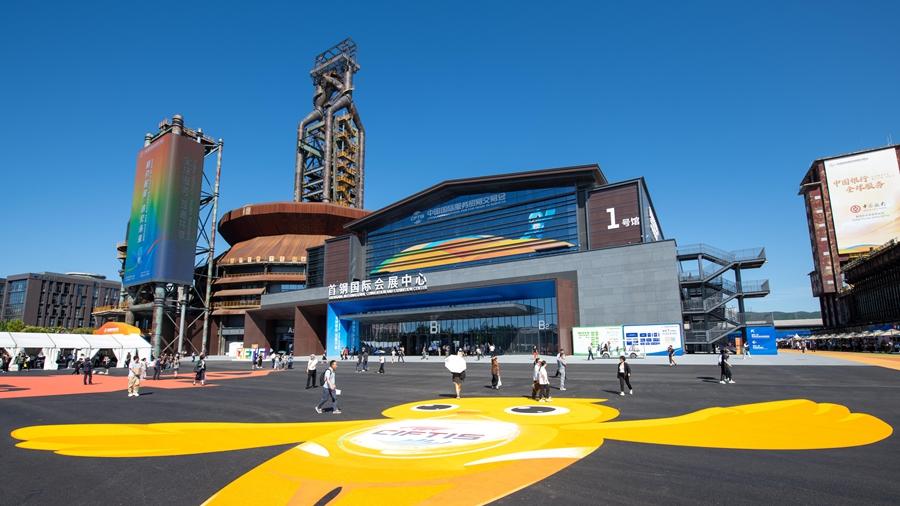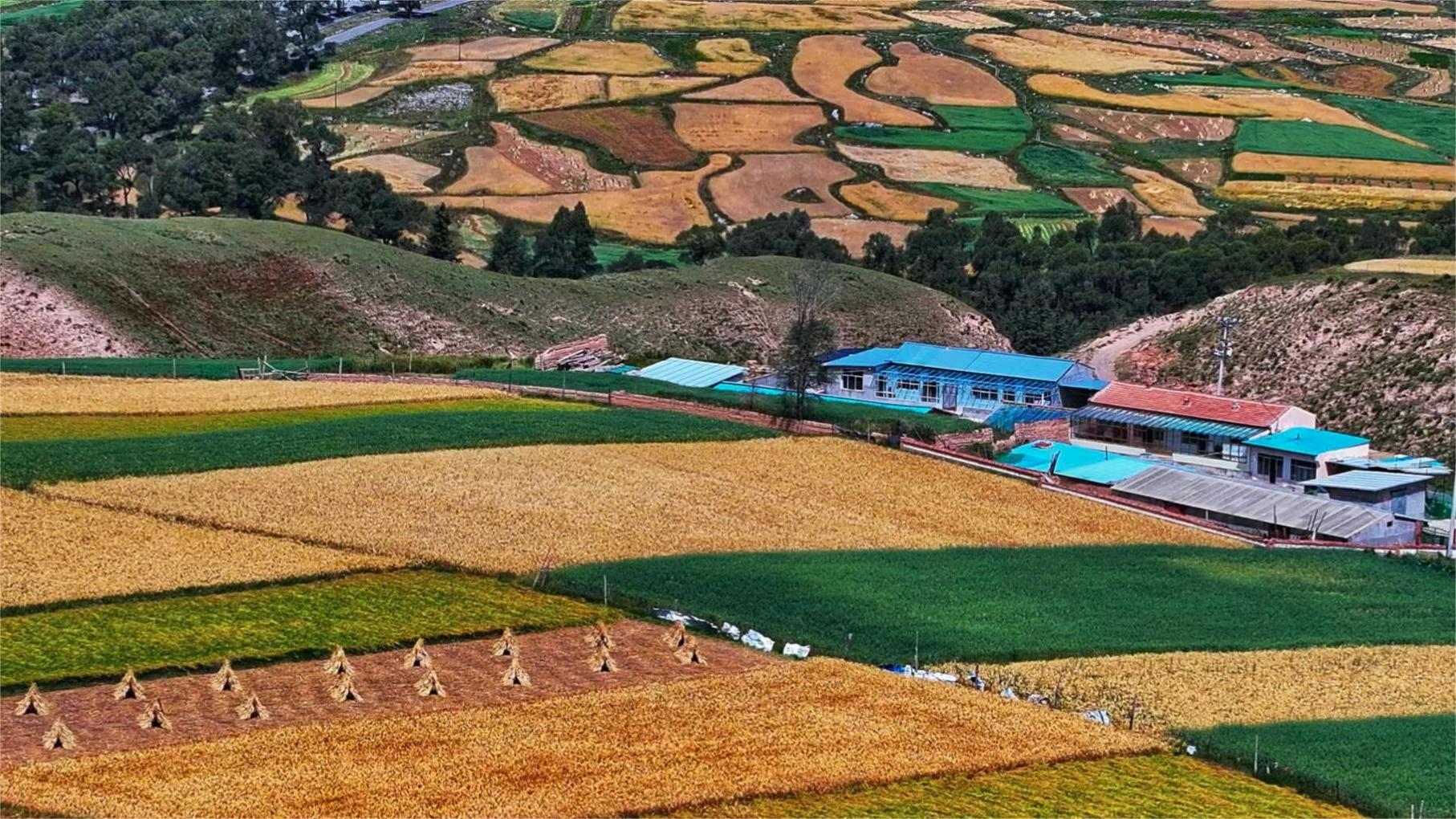Ancient town becomes new tourist destination in China's Leshan

Tourists take a rest in a corridor along the street in the ancient town of Luocheng in Leshan City, southwest China's Sichuan Province, Sept. 13, 2024. The ancient town of Luocheng was founded in the late Ming Dynasty (1368-1644) and formed in the Qing Dynasty (1644-1911). Located on a mountain top, the ancient town boasts a unique architectural layout. The boat-shaped street, consisting of stone roads, traditional dwellings and corridors along the street, is called "dry wharf" by locals.
In recent years, the ancient town has recreated ancient streets, alleys and dwellings, where tourists can stroll around, enjoy local food and experience intangible cultural heritage, immersing themselves in a slow-paced life. (Xinhua/Tang Wenhao)

Locals take a rest at a roadside teahouse in the ancient town of Luocheng in Leshan City, southwest China's Sichuan Province, Sept. 13, 2024. The ancient town of Luocheng was founded in the late Ming Dynasty (1368-1644) and formed in the Qing Dynasty (1644-1911). Located on a mountain top, the ancient town boasts a unique architectural layout. The boat-shaped street, consisting of stone roads, traditional dwellings and corridors along the street, is called "dry wharf" by locals.
In recent years, the ancient town has recreated ancient streets, alleys and dwellings, where tourists can stroll around, enjoy local food and experience intangible cultural heritage, immersing themselves in a slow-paced life. (Xinhua/Tang Wenhao)

Children perform martial arts for tourists in the ancient town of Luocheng in Leshan City, southwest China's Sichuan Province, Sept. 13, 2024. The ancient town of Luocheng was founded in the late Ming Dynasty (1368-1644) and formed in the Qing Dynasty (1644-1911). Located on a mountain top, the ancient town boasts a unique architectural layout. The boat-shaped street, consisting of stone roads, traditional dwellings and corridors along the street, is called "dry wharf" by locals.
In recent years, the ancient town has recreated ancient streets, alleys and dwellings, where tourists can stroll around, enjoy local food and experience intangible cultural heritage, immersing themselves in a slow-paced life. (Xinhua/Tang Wenhao)

This photo taken on Sept. 13, 2024 shows local food of the ancient town of Luocheng in Leshan City, southwest China's Sichuan Province. The ancient town of Luocheng was founded in the late Ming Dynasty (1368-1644) and formed in the Qing Dynasty (1644-1911). Located on a mountain top, the ancient town boasts a unique architectural layout. The boat-shaped street, consisting of stone roads, traditional dwellings and corridors along the street, is called "dry wharf" by locals.
In recent years, the ancient town has recreated ancient streets, alleys and dwellings, where tourists can stroll around, enjoy local food and experience intangible cultural heritage, immersing themselves in a slow-paced life. (Xinhua/Tang Wenhao)

Tourists visit the ancient town of Luocheng in Leshan City, southwest China's Sichuan Province, Sept. 13, 2024. The ancient town of Luocheng was founded in the late Ming Dynasty (1368-1644) and formed in the Qing Dynasty (1644-1911). Located on a mountain top, the ancient town boasts a unique architectural layout. The boat-shaped street, consisting of stone roads, traditional dwellings and corridors along the street, is called "dry wharf" by locals.
In recent years, the ancient town has recreated ancient streets, alleys and dwellings, where tourists can stroll around, enjoy local food and experience intangible cultural heritage, immersing themselves in a slow-paced life. (Xinhua/Tang Wenhao)

A drone photo taken on June 30, 2023 shows a night view in the ancient town of Luocheng in Leshan City, southwest China's Sichuan Province. The ancient town of Luocheng was founded in the late Ming Dynasty (1368-1644) and formed in the Qing Dynasty (1644-1911). Located on a mountain top, the ancient town boasts a unique architectural layout. The boat-shaped street, consisting of stone roads, traditional dwellings and corridors along the street, is called "dry wharf" by locals.
In recent years, the ancient town has recreated ancient streets, alleys and dwellings, where tourists can stroll around, enjoy local food and experience intangible cultural heritage, immersing themselves in a slow-paced life. (Xinhua)
Photos
Related Stories
Copyright © 2024 People's Daily Online. All Rights Reserved.









